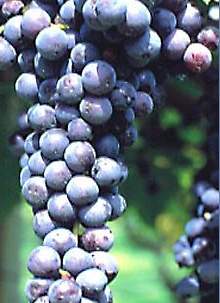24 January 2013
Moscato Rosa becomes suitable for cultivation
A new grape variety expands Sicily's ampelographic platform. With the 2012 decree of the General Director of the Regional Department of Structural Interventions for Agriculture, the cultivation in the regional territory of Moscato Rosa was authorized, a variety particularly suitable for the production of various types of after-dinner wines, i.e. natural sweets, liqueurs, late harvest. Moscato Rosa thus becomes one of the grape varieties "suitable for cultivation".
The request for authorization was made by IRVOS which, together with the "Viticultural and Oenological Research Unit", carried out field observations and oenological experiments at the microvinification cellar for several years.
Field production of the vine is particularly low, in some years even much lower than one kilogram per plant, due to low fertility and because the bunches can have a high level of sagging and low fruit set. The bunch is medium-large in size, pyramidal or cylindrical-conical in shape, elongated, winged, slightly sparse. The grape is spheroidal and sometimes slightly flattened, with a thin but leathery skin, very pruinous and of an intense purple colour; showed a slight sensitivity to powdery mildew. In Sicily, Moscato Rosa was harvested at the end of August - beginning of September, when good overripeness of the bunches on the vine was achieved. The experimentally obtained wines, light ruby red in color, highlighted aromatic notes of rose, ripe fruit, jam and a good tasting persistence. There are several theories about the origin of the vine. It seems that the cultivar is of Greek origin and passing through Sicily it arrived in Trentino and Friuli in the mid-nineteenth century thanks to the Sicilian princes of Campofranco. Or, another hypothesis claims that Moscato Rosa was brought from the East to the West by a spice trader. Yet another claims it was imported from South America, where it is known by the name of Rose of Peru or finally it could be the result of a mutation resulting from fortuitous crossbreeding. Di Rovasenda 1877 and other scholars identified it in the Columella apiana grape. According to others, it originates from the Caucasus and subsequently settled in Dalmatia. It arrived in the Dolomites in the early twentieth century as a wedding gift to a noble girl from a local cellar dynasty.
Ultime notizie
News 9 January 2025
Public Consultation Update PTPCT IRVO 2025-2027
Public consultation for the purpose of updating the Three-Year Plan for the Prevention of Corruption and Transparency (PTPCT) 2025/2027 In order to allow maximum involvement in the preparation of the update of the Three-Year Plan for the Prevention of Corruption and Transparency of the Regional Institute of Wine and Oil for the three-year period 2025/2027, all those who are interested are invited - in particular citizens, companies, consumer associations, representative trade unions, other entities operating in the territory representing particular interests - to send observations and/or proposals to the Person in Charge of the Prevention of Corruption and Transparency (RPCT), which will be evaluated when drafting the document.


